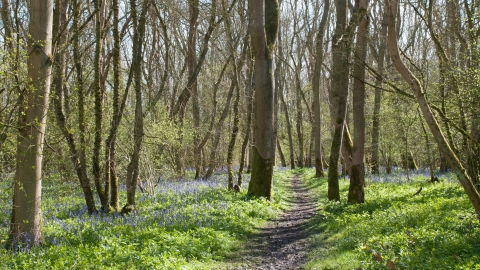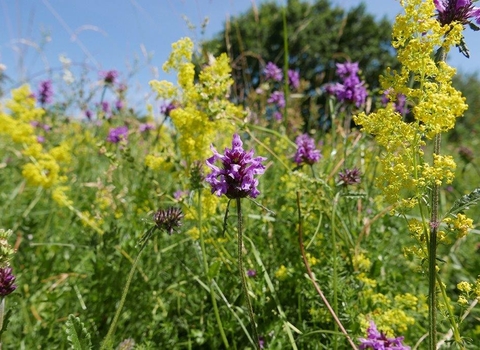
Wistow wood - George Barker
Wistow Wood
Know before you go
Dogs
When to visit
Opening times
Open at all times except during management work.Best time to visit
SpringAbout the reserve
The wood contains evidence of a long history of traditional management. Numerous old ash trees with several stems indicate the past practice of coppicing, where trees were cut at ground level to take a crop of wood and stumps were left to re-grow. Most of the mature trees were removed before the 1920s, but since then the wood has been left to regenerate.
The old rotten bases of the trees provide a marvellous habitat for mosses and lichens, fungi and insects. During spring the woodland floor abounds with dog's mercury, bluebells, wood anemones and primroses. The woodland rides have summer flora including meadowsweet and ragged-robin as well as a variety of grasses and sedges.
Woodland management: tree thinning and ash dieback
This ancient wood (older than 400 years and possibly thousands of years old) was once much more structurally complex due to traditional management of regularly cutting down areas and harvesting woodland products – timber, firewood, poles and sticks. Initially, to restore some structural diversity and improve areas for wildlife, selected Ash trees have been felled in the centre of the wood to promote the growth of a new generation of trees by allowing more light to reach the ground and seedlings.
Unfortunately, the Ash trees across the wood are showing signs of Ash Dieback Disease, which leads to decay in stems, branches and roots and eventually whole tree death. This means the majority of remaining Ash trees across the wood will continue to decline and die over the coming years. The death of the trees within a short space of time and diseased trees becoming unsafe (dropping branches and falling over) has meant that we have cleared a bigger area of trees than we would ordinarily in a wood this size.
Although at first the works carried out may seem destructive, regeneration of trees and shrubs will be swift and native flora and fauna will benefit from the new range of conditions. The majority of the timber extracted from the wood has helped to pay for the management works.
If you have any questions or would like to know more become more involved in local wildlife conservation work, please contact us using the details below.
Additional information
- Scroll down to see the reserve boundary. Please note the boundary map is for indication purposes only and does not show the Wildlife Trusts definitive land boundary.
FOR ANY MEDIA ENQUIRIES PLEASE CONTACT OUR COMMUNICATIONS TEAM: communicationsteam@wildlifebcn.org or 01954 713500 and ask for comms team.

